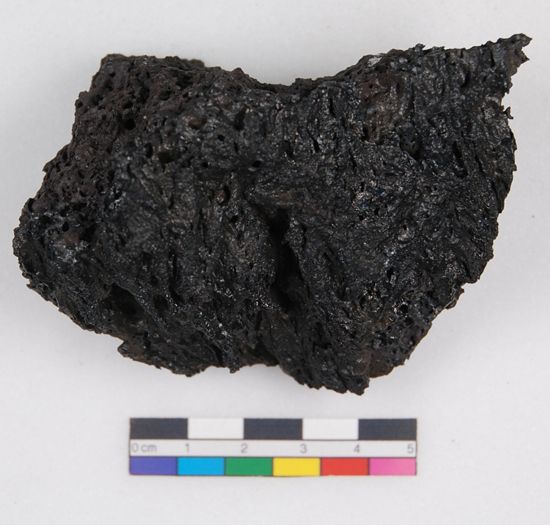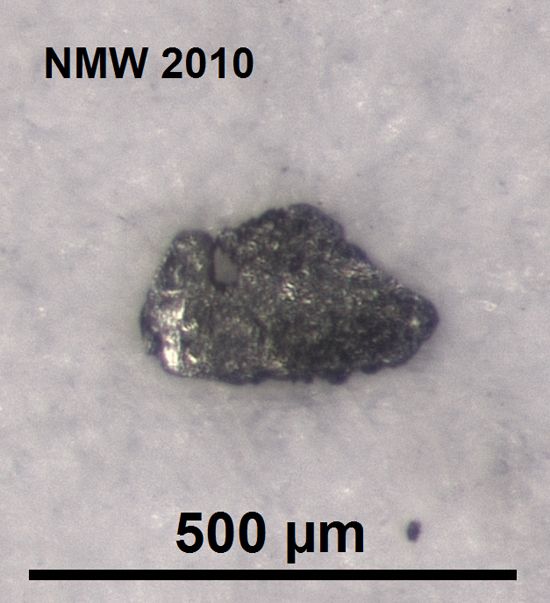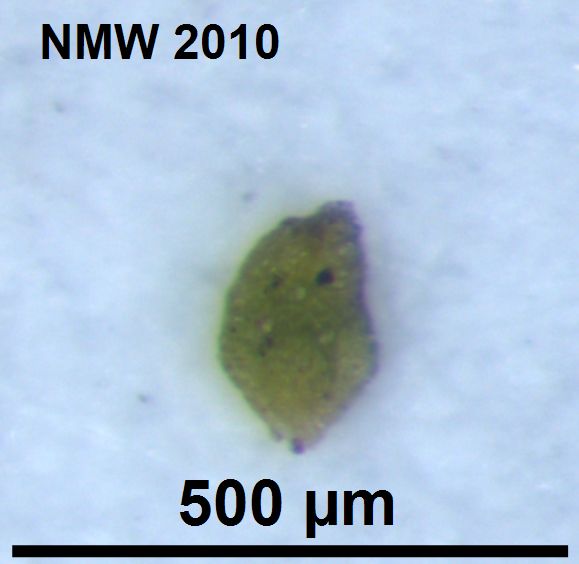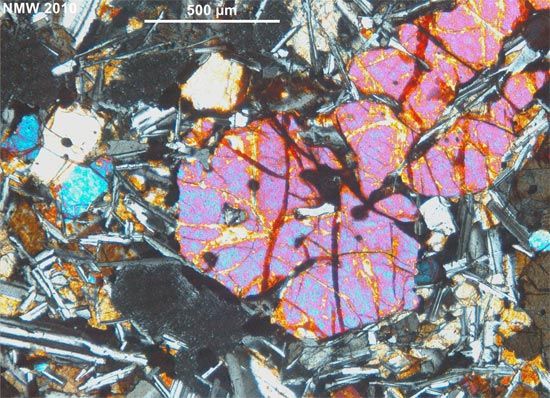Volcanic ash falls on Wales

Specimen of Icelandic basalt from the Geology collection

Sharp, glassy, volcanic particle (scale: 500 microns)

Pyroxene (scale: 500 microns)

Olivine

Basalt thin section
A section of basalt rock thin enough to let light to pass through it allow geologists to study the minerals in the rock under a microscope.
Icelandic ash analysed by Geology Department staff:
Staff from the Geology Department at Amgueddfa Cymru - National Museum Wales collected and analysed volcanic ash that fell on cars roofs in the Cardiff area on Friday 16th April 2010.
The ash was produced by the eruption of Eyjafjallajökull volcano which lies under a glacier in southern Iceland. After lying dormant for nearly 200 years, the volcano had been active since March 2010.
On Wednesday 14 April the volcano erupted violently, blasting vast amounts of volcanic ash into the atmosphere. The violence of the eruption was exceptionally strong because explosions took place as the hot magma came into contact with water from the melting of the glacier through which it erupted. At the time of writing the volcano was still in eruption.
Carried away by prevailing winds towards the UK and Northern Europe, the ash has led to severe disruption of commercial air travel. This is because volcanic ash can be sucked into aeroplane engines, causing them to clog, leading to engine failure.
Because the ash is so fine grained Geology Department staff had to capture images of the ash using a camera mounted on a high power microscope. They found the ash contained fragments of solid lava, sharp, glassy volcanic particles, and the minerals feldspar, olivine and pyroxene. These minerals are the common constituents of the volcanic rock called basalt, which is consistent with the type of volcanic eruption currently occurring in Iceland.
Iceland is a very geologically active region as it sits on the Mid Atlantic Ridge. Earthquakes and volcanic eruptions are relatively commonplace. Iceland is the only place where the Mid Atlantic Ridge is seen on land.
Images of ash captured using a high power microscope (1μm = 1/1000 mm).
Glossary
Ash
Fine volcanic material (less than 2mm in size) ejected from a volcano during an eruption.
Basalt
Volcanic rock formed by the cooling of lava, containing the minerals feldspar, olivine and pyroxene. Basalt is the most common of lava types.
Lava
Molten rock erupted at the Earth’s surface.
Magma
Molten rock below the surface of the Earth’s crust, which may be erupted as lava.
Mid Atlantic Ridge
The Earth’s crust is made of numerous